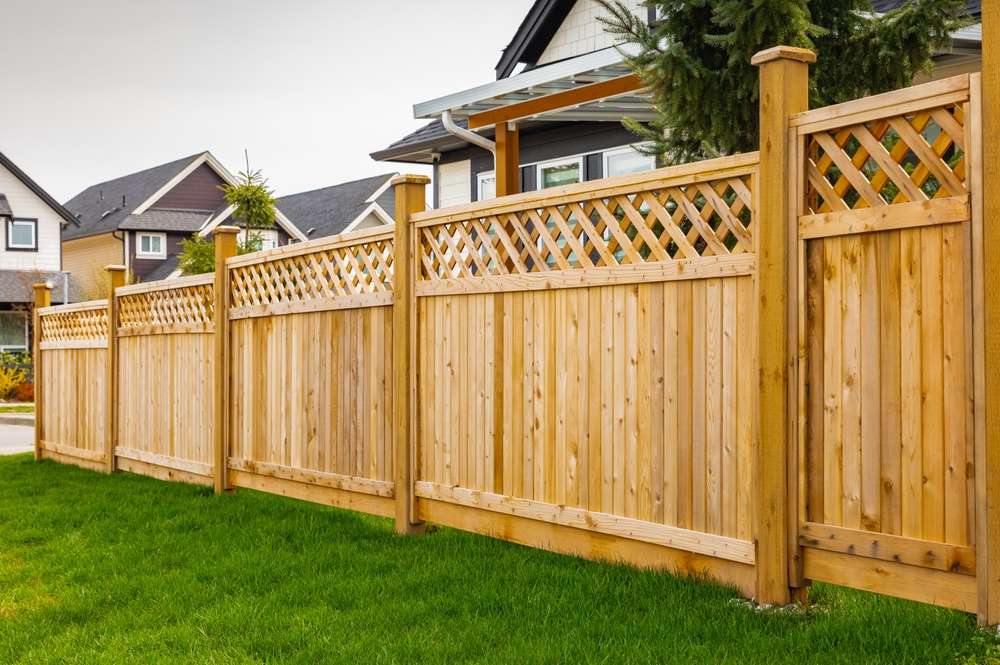Everything You Need to Know About Garden Fence Prices and Installation
Installing a garden fence is one of the most effective ways to enhance your property's privacy, security, and aesthetic appeal. Whether you're looking to keep pets contained, establish property boundaries, or simply add visual interest to your outdoor space, understanding the costs and installation process is crucial for making informed decisions. From material selection to labor expenses, several variables will impact your overall investment in a new garden fence project.

What Are the Key Factors That Affect the Cost of Installing a Garden Fence in Canada?
Several important elements influence the total expense of your garden fence installation. The size and perimeter of your property directly impact material quantities and labor hours required. Terrain challenges such as slopes, rocky soil, or existing landscaping features can increase installation complexity and costs. Local building codes and permit requirements vary by municipality, potentially adding regulatory fees to your project budget.
Geographic location within Canada also plays a significant role in pricing variations. Urban centers like Toronto, Vancouver, and Calgary typically command higher labor rates compared to rural areas. Seasonal timing affects costs as well, with spring and summer installations often carrying premium pricing due to increased demand for outdoor projects.
How Do Common Fence Materials Influence Total Installation Cost?
The material you choose represents the largest portion of your fence budget and significantly impacts long-term maintenance expenses. Wood fencing remains popular for its natural appearance and moderate upfront costs, with cedar and pressure-treated pine being common choices. Cedar offers superior weather resistance but commands higher prices, while pressure-treated lumber provides good value for budget-conscious homeowners.
Vinyl fencing delivers excellent durability and low maintenance requirements, though initial costs are typically higher than wood options. Metal fencing, including aluminum and steel, offers exceptional longevity and security but requires professional installation expertise. Chain link fencing provides the most economical option for large perimeters, though it offers limited privacy compared to solid panel alternatives.
Composite materials combine wood fibers with synthetic polymers, creating low-maintenance options that resist weathering and insects. While composite fencing carries premium pricing, many homeowners appreciate the reduced long-term upkeep requirements compared to traditional wood materials.
What Should You Consider When Budgeting for a New Garden Fence Project?
Proper budgeting extends beyond initial material and installation costs to include long-term ownership expenses. Factor in annual maintenance requirements such as staining, painting, or repairs that vary significantly between material types. Consider the fence’s intended lifespan and calculate cost-per-year to make accurate comparisons between different options.
Professional installation typically costs more upfront but includes warranties and ensures proper construction techniques. DIY installation can reduce labor expenses but requires appropriate tools, skills, and time investment. Many homeowners underestimate the complexity of proper post installation, gate hanging, and ensuring level panels across varied terrain.
Don’t forget to include additional components in your budget such as gates, hardware, post caps, and decorative elements. These accessories can add 15-30% to your total project cost but significantly impact functionality and appearance.
Understanding current market pricing helps establish realistic expectations for your garden fence project. Professional installation typically ranges from $20-60 per linear foot depending on material selection and site conditions. Here’s a comparison of popular fencing options available through Canadian suppliers:
| Material Type | Average Cost Per Linear Foot | Lifespan | Maintenance Level |
|---|---|---|---|
| Pressure-Treated Wood | $25-35 | 10-15 years | Medium |
| Cedar Wood | $30-45 | 15-20 years | Medium |
| Vinyl | $35-55 | 20-30 years | Low |
| Aluminum | $40-65 | 25-30 years | Low |
| Composite | $45-70 | 20-25 years | Low |
Prices, rates, or cost estimates mentioned in this article are based on the latest available information but may change over time. Independent research is advised before making financial decisions.
Planning Your Installation Timeline
Successful fence installation requires careful planning and coordination with local contractors and suppliers. Spring represents the busiest season for fence installation, often requiring booking 4-6 weeks in advance. Summer installations offer consistent weather conditions but may face material supply challenges during peak construction periods.
Fall installations can provide cost advantages as contractors seek to complete projects before winter, though weather delays become more likely. Winter installation is generally not recommended in most Canadian regions due to frozen ground conditions that complicate post installation.
Obtain multiple quotes from licensed contractors to ensure competitive pricing and compare installation approaches. Verify that quotes include all necessary components, permits, and cleanup services to avoid unexpected expenses during the project.
Maximizing Your Fence Investment
Your garden fence represents a significant investment that can enhance property value and outdoor enjoyment for many years. Choose materials and designs that complement your home’s architecture and neighborhood character. Consider future landscape plans that might be affected by fence placement and access requirements.
Proper maintenance extends fence lifespan and protects your investment value. Establish annual inspection routines to identify potential issues before they require major repairs. Keep installation documentation and warranty information for future reference and potential property sale situations.
Quality installation by experienced professionals typically provides better long-term value than attempting complex DIY projects. Professional installers understand local building codes, proper drainage considerations, and techniques for handling challenging soil conditions that ensure your fence performs reliably for years to come.




